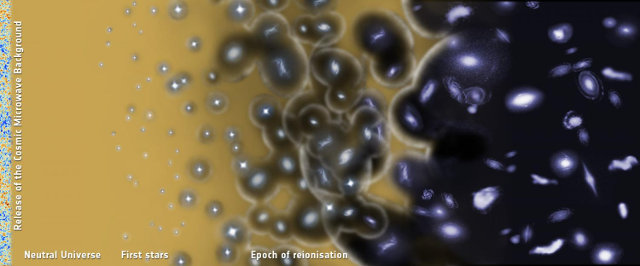
Two articles published in the journal “Astronomy and Astrophysics” describe the latest updates regarding the analysis of the data collected by ESA’s Planck Surveyor space probe between 2009 and 2013. The latest results show that the first stars started forming about 700 million years after the Big Bang, about 150 million years later than earlier analyzes indicated.
Planck Surveyor is a special space telescope designed to study the cosmic microwave background radiation – CMB or CMBR – the residue of the earliest stages of the universe. It’s the latest of a series of increasingly perfected instruments that in the course of decades contributed to this type of research better and better.
Cosmic microwave background radiation is polarized, a phenomenon that may be caused by the collision of photons with other particles. This happened commonly at the time when cosmic microwave background radiation originated. Its polarization can provide information on a phase of the history of the universe known as reionization. During that phase the light of the first stars interacted with the gas present in great abundance in the universe ionizing it and therefore separating electrons from protons.
Before the analysis of the data collected by the Planck Surveyor it seemed that the first stars were born very soon and that their light wasn’t enough to cause the reionization. An analysis of the data collected by the Planck Surveyor’s LFI (Low Frequency Instrument) showed that the stars started forming about 550 million years after the Big Bang and that explained reionization in a plausible way.
This new analysis was performed using the data of the other Planck Surveyor instrument, the High Frequency Instrument (HFI), the most sensitive ever built for the analysis of reionization. Jean-Loup Puget of the Institut d’Astrophysique Spatiale in Orsay, France, principal investigator of HFI, explained that according to this instrument’s detections reionization was a very quick process in astronomical terms that began relatively late in the history of the universe.
Arrived at the age of 700 million years, the universe was already half reionized and at the age of 900 million years the reionization was already completed. These results confirm that this process was initiated by the first stars and nothing else was needed. This is one of the phases of the analysis of the data collected by Planck Surveyor, which will continue to try to establish the start of the reionization period and to publish the final maps of the Planck Surveyor’s results.


Permalink
Permalink